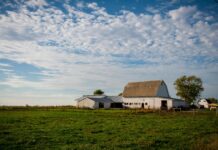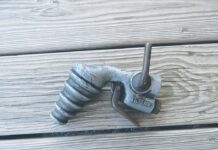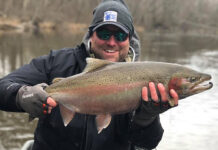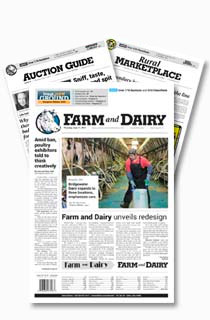The weather has taken a turn for the better, going from the negative double digits just a few weeks ago and now set to go as high as the upper 50s. What do these warmer temperatures mean for livestock? Mud, and more mud.
Mud management for livestock is an important aspect of maintaining animal health, the integrity of pastureland and farm productivity. Mud can lead to numerous problems, such as hoof damage, increased risk of disease and reduced pasture productivity. Effective mud management strategies typically involve preventing excessive mud accumulation, managing drainage and providing alternative surfaces for animals to stand on. Here are some key strategies for managing mud in livestock areas.
Improving drainage
Shape the land to direct water away from animal areas. Proper slope and grading can help water flow off instead of collecting in puddles.
Install French drains (trenches filled with gravel or perforated pipes) to divert water away from problem areas. Create ditches or swales to channel water away from animal traffic areas.
Ensure gutters are in good condition and direct rainwater runoff away from high-traffic areas.
Limiting access
If a specific area becomes too muddy, consider fencing it off to prevent livestock from making it worse. Use rotational grazing practices to give pastures time to recover and reduce damage from overgrazing, which can worsen mud problems.
Providing alternative surfaces
Place gravel, crushed rock or other aggregate materials in high-traffic areas like feeding areas, gates and watering points. This can help minimize mud buildup by providing a stable surface.
Lay rubber mats in certain areas like feeding stations or near water troughs. They provide a non-slippery, firm surface for animals. Using organic material like wood chips or straw in feeding areas can help absorb moisture and reduce mud. However, this needs regular maintenance to avoid turning into a soggy mess.
Vegetation management
Reseeding pastures can help establish a thick grass cover that reduces erosion and mud. Choosing grass species suited to your climate and soil type is key.
Turf reinforcement mats can stabilize the soil and encourage the growth of grass, preventing it from getting trampled and muddy.
Proper livestock management
If possible, feed livestock in designated, well-drained areas to avoid spreading mud. Hay feeders or feed bunks can also help keep feed off the ground and reduce mud. Position water troughs in areas where water can drain easily.
Consider using troughs that are easy to clean to avoid stagnation and muck buildup.
Winter and wet weather consideration
During wet or winter months, limit animals’ access to areas prone to heavy mud. Temporary shelters or barn access can keep livestock dry and comfortable. For areas that will be used regularly during wet conditions, consider investing in commercial mud control mats. They can help reduce the impact of muddy conditions.
Summary
Effective mud management is an ongoing process that involves a combination of proper infrastructure, animal management, and attention to the needs of the pasture or grazing land.
Monitoring weather patterns, maintaining pastures, and adapting strategies to changing conditions can help minimize the negative effects of mud for livestock.













